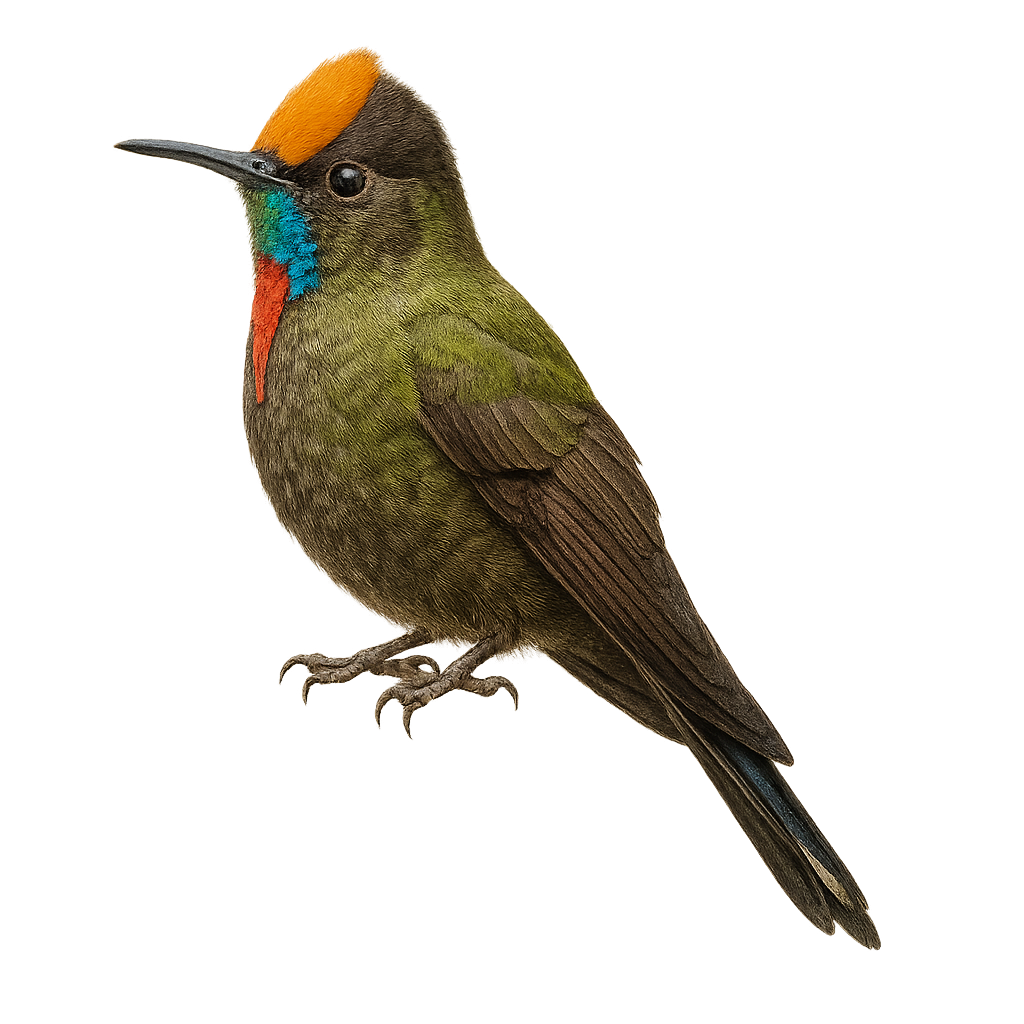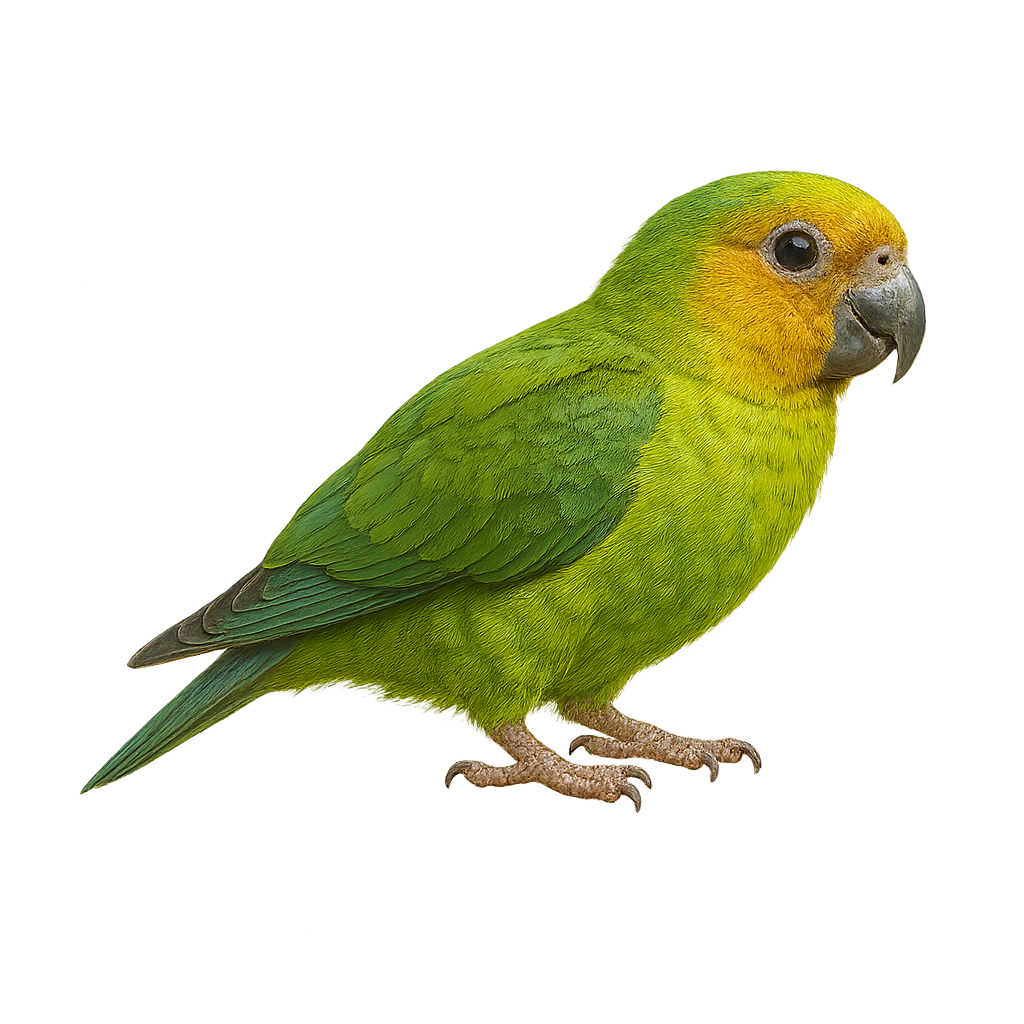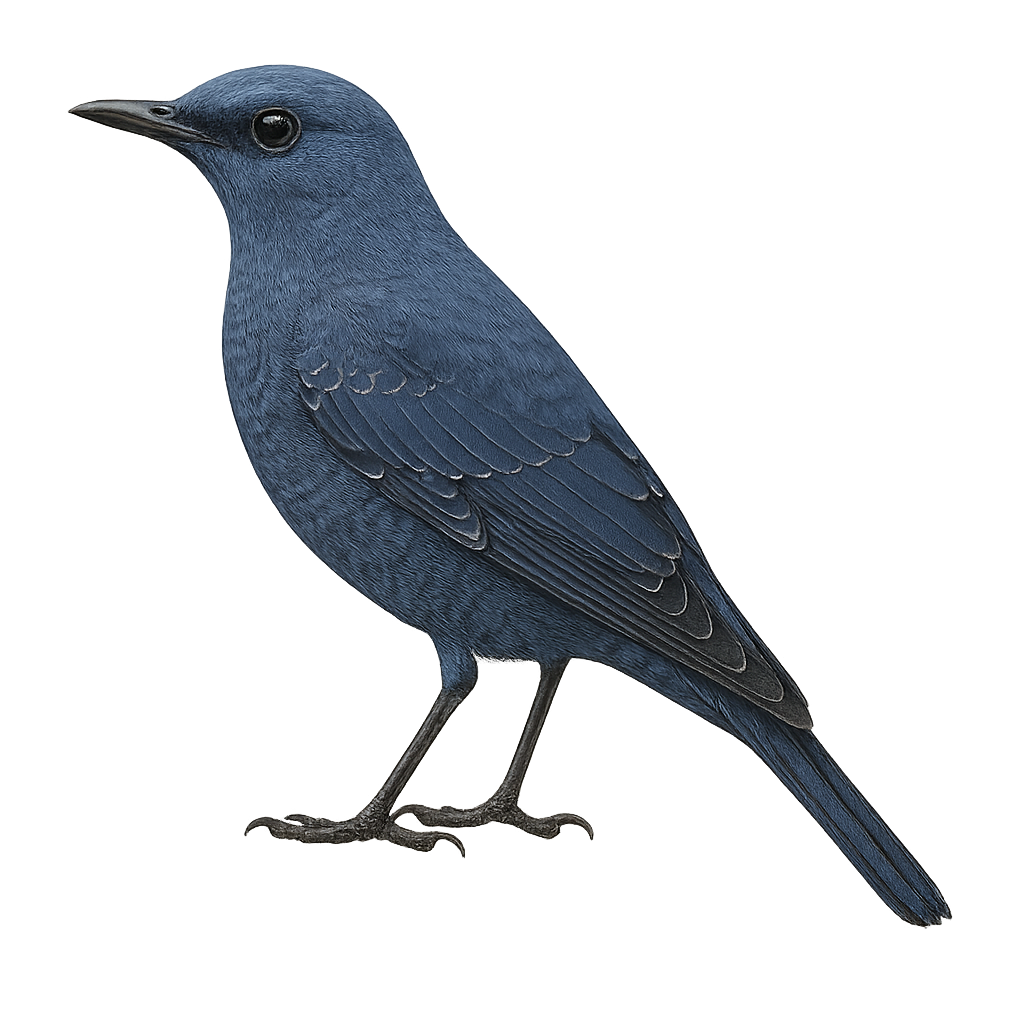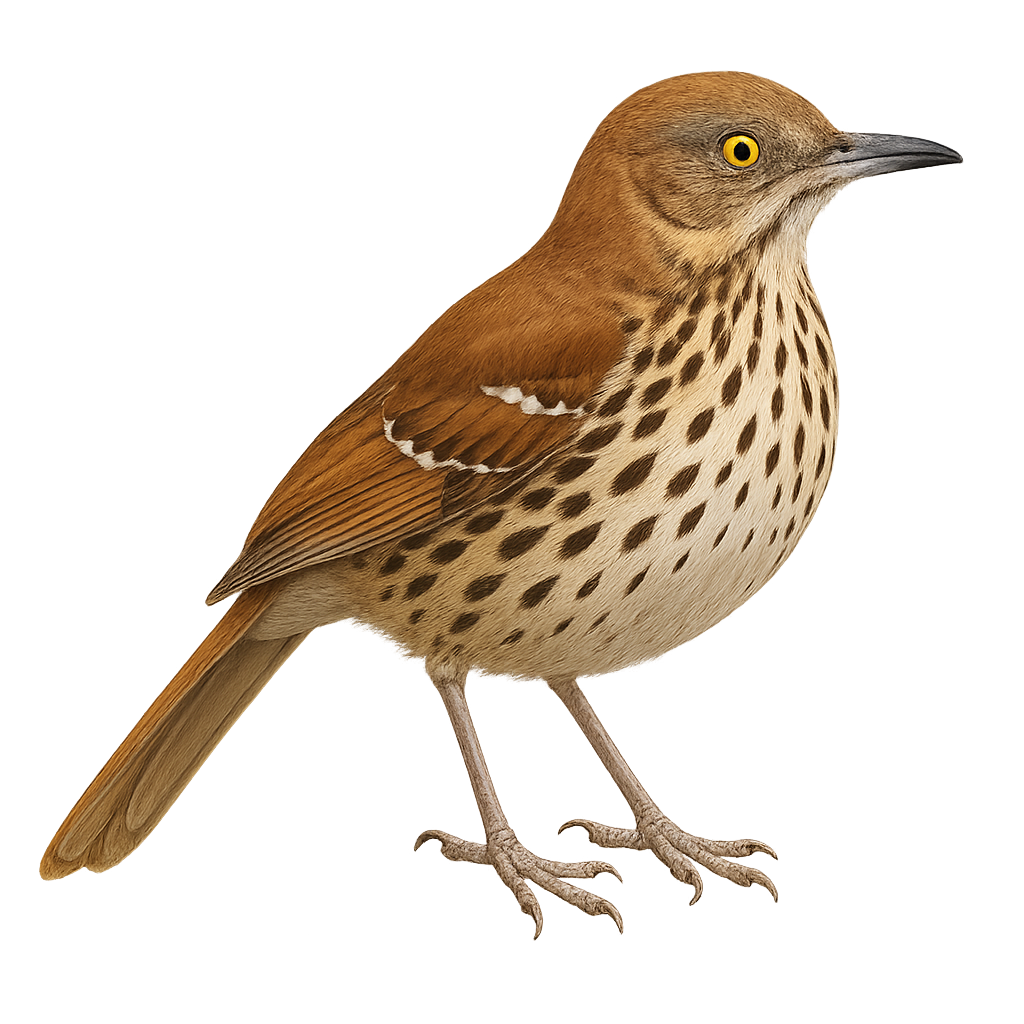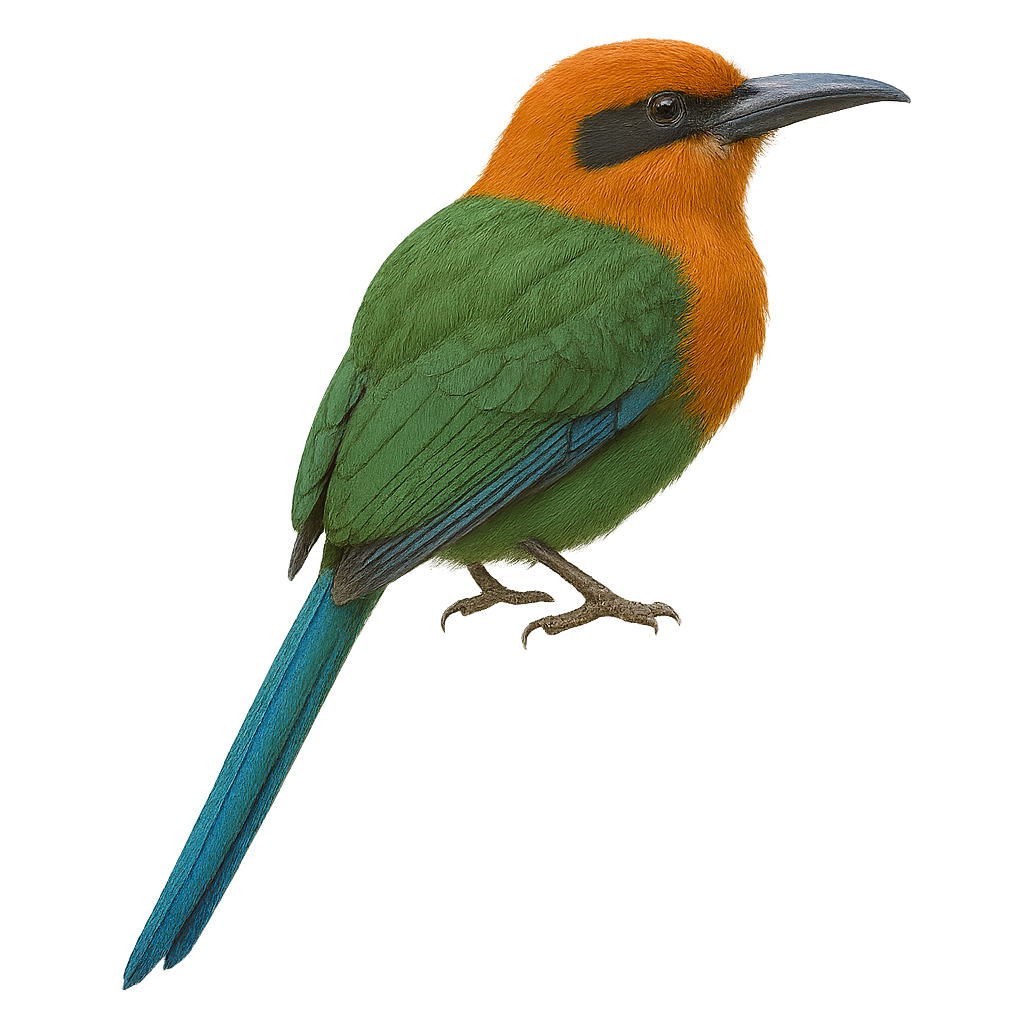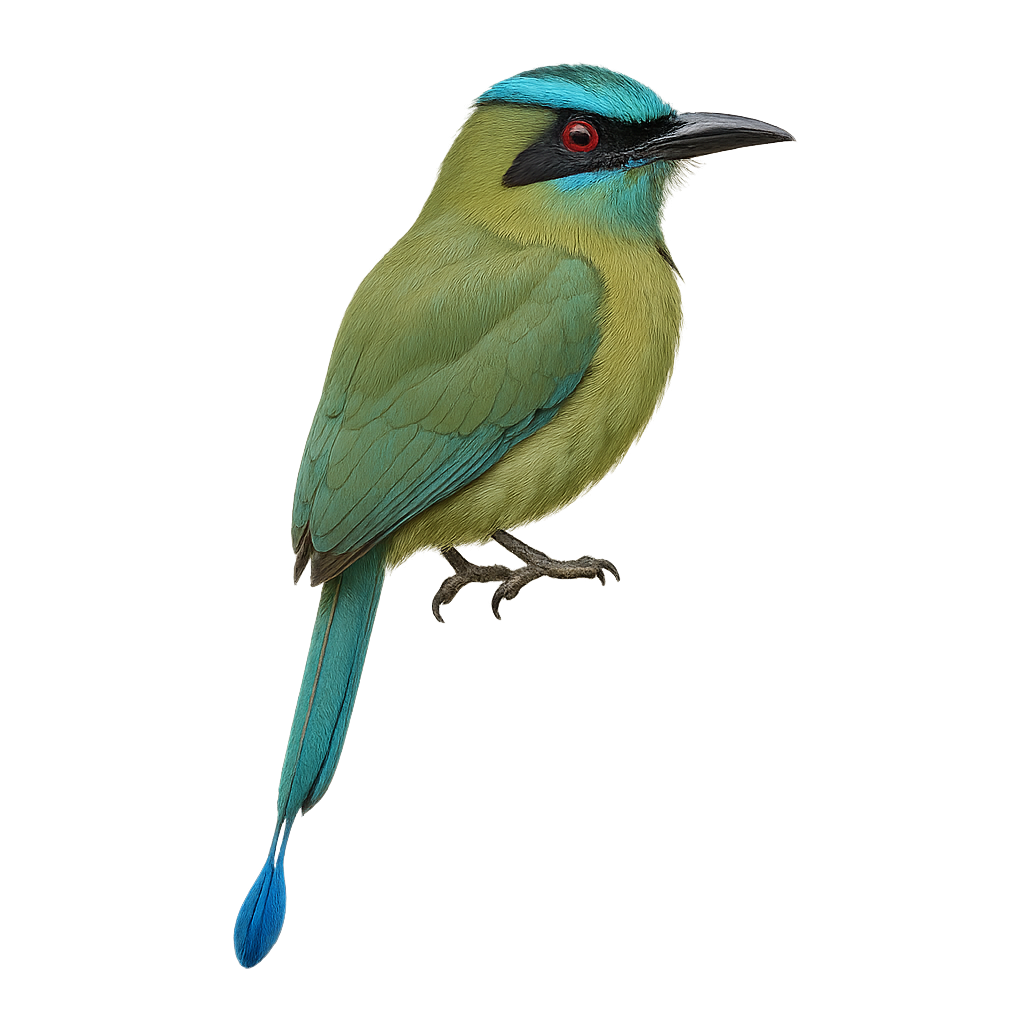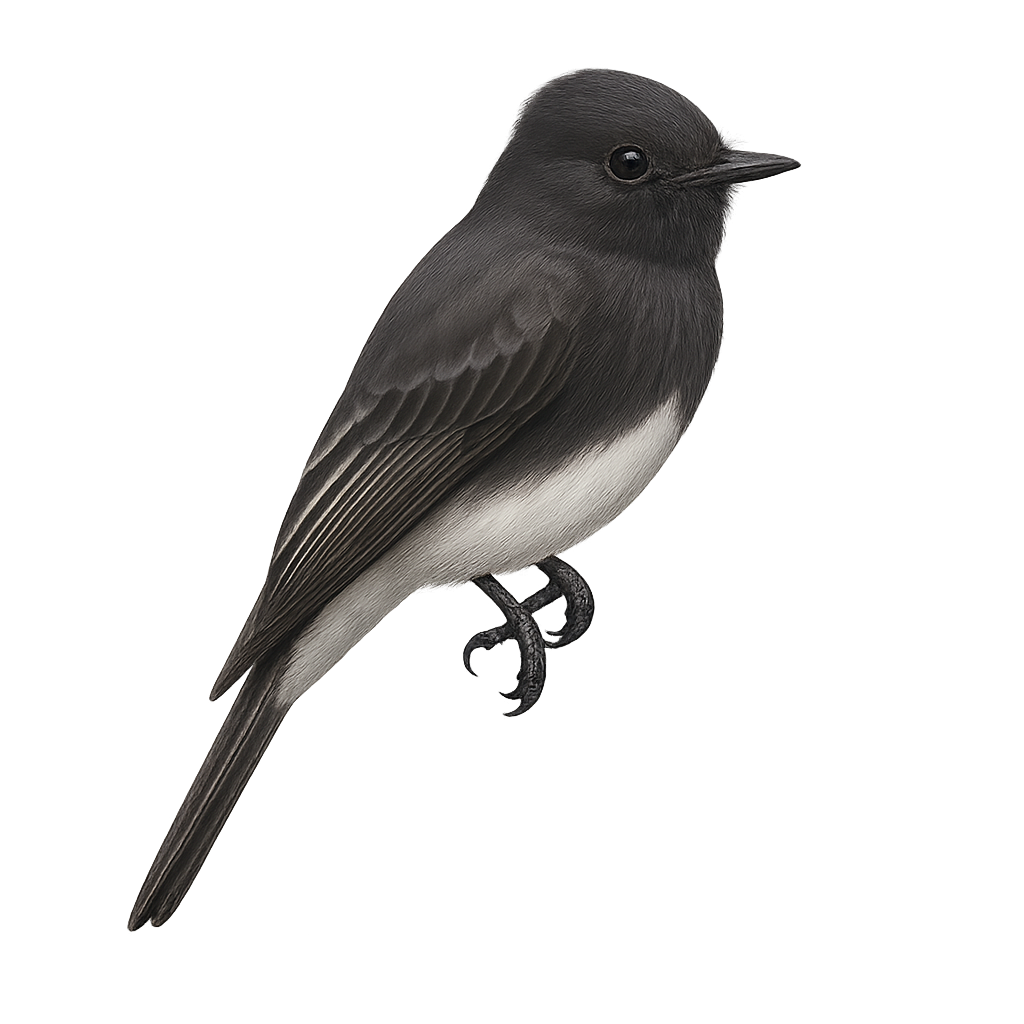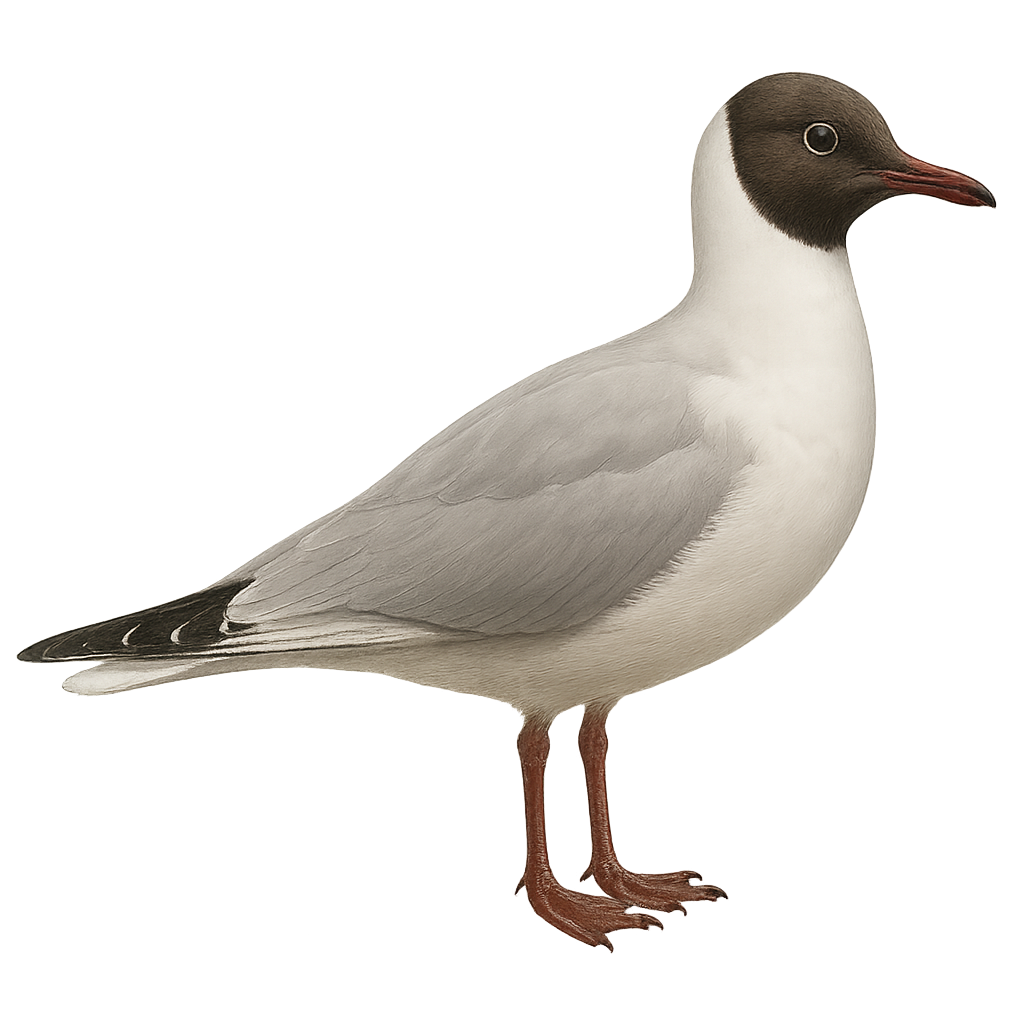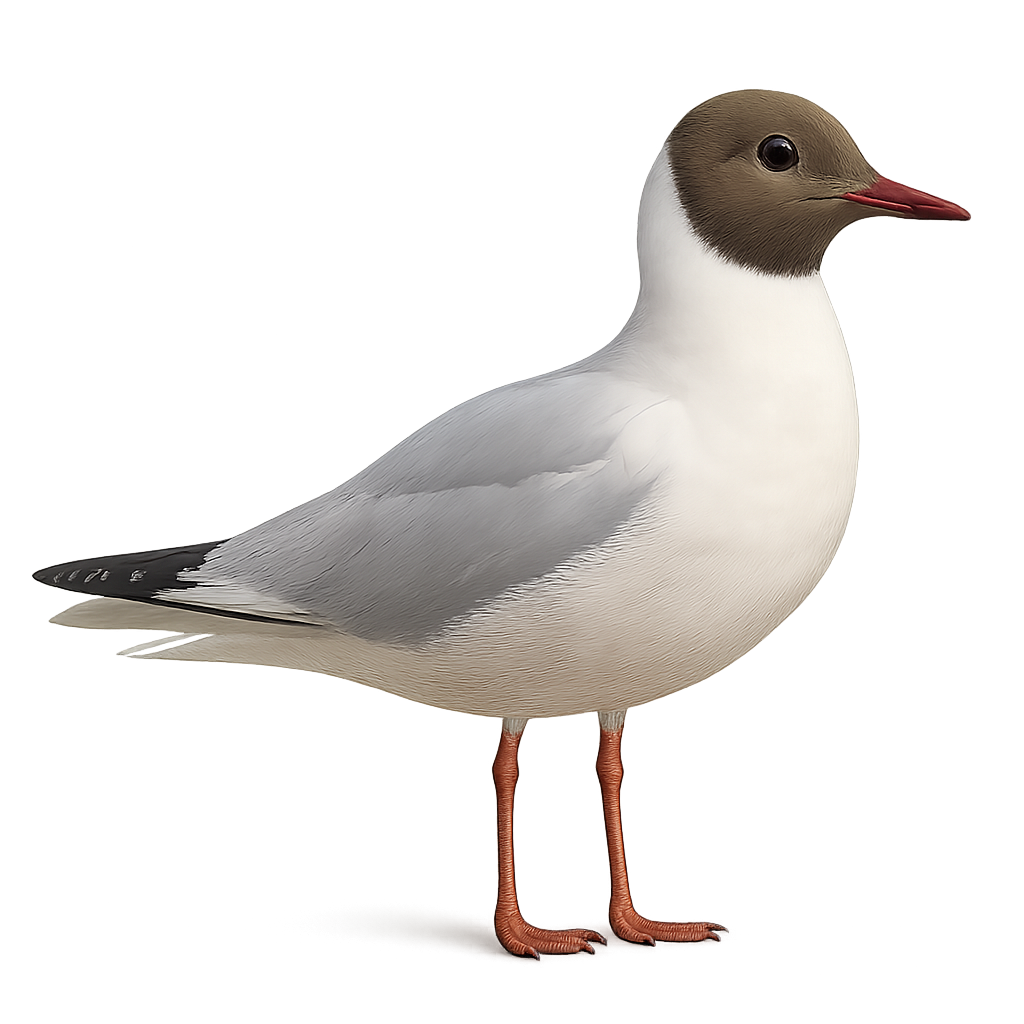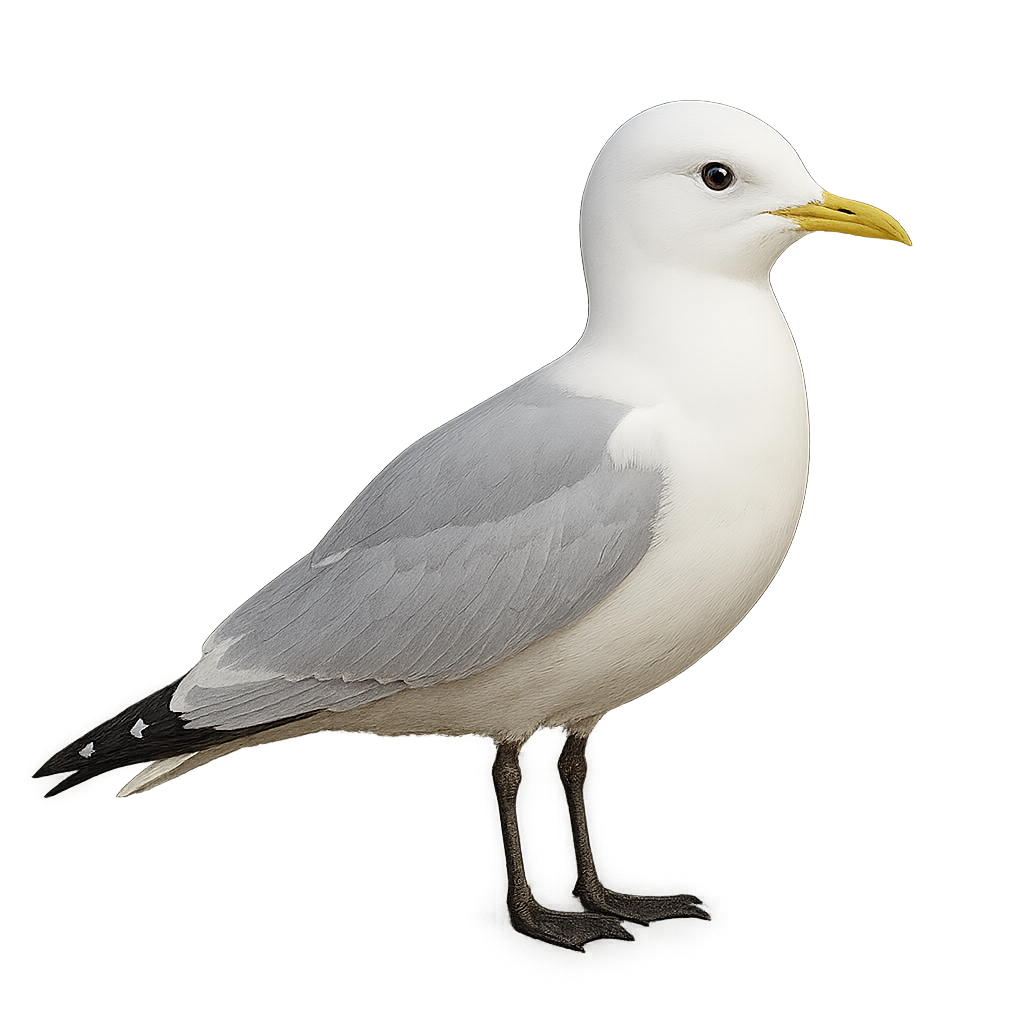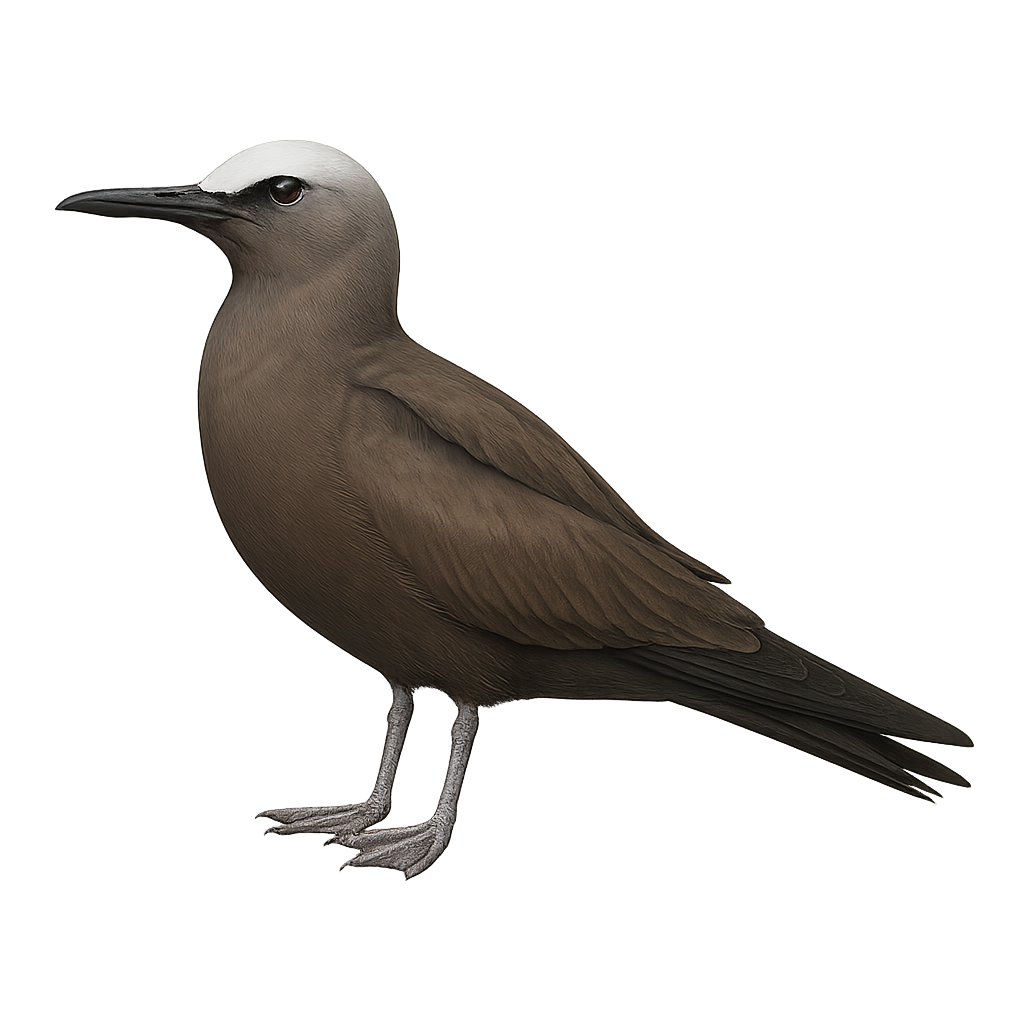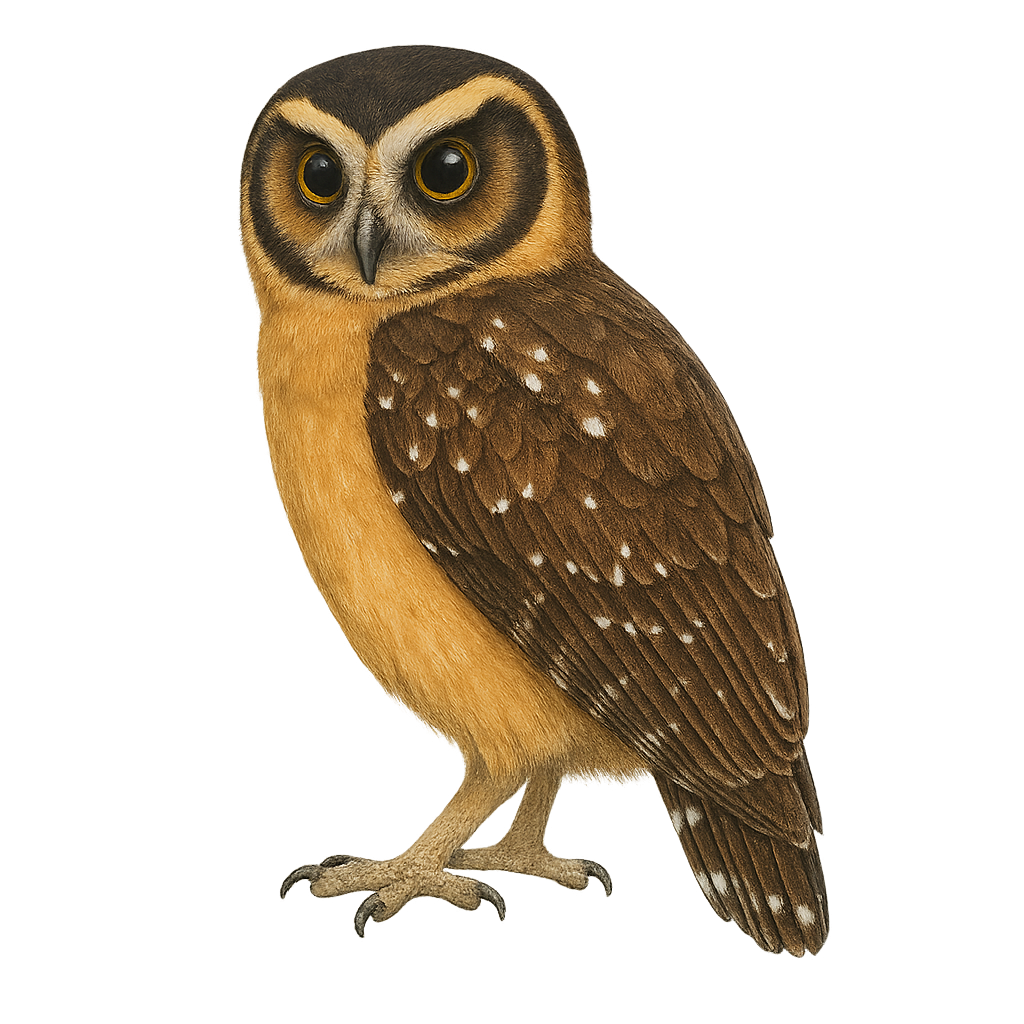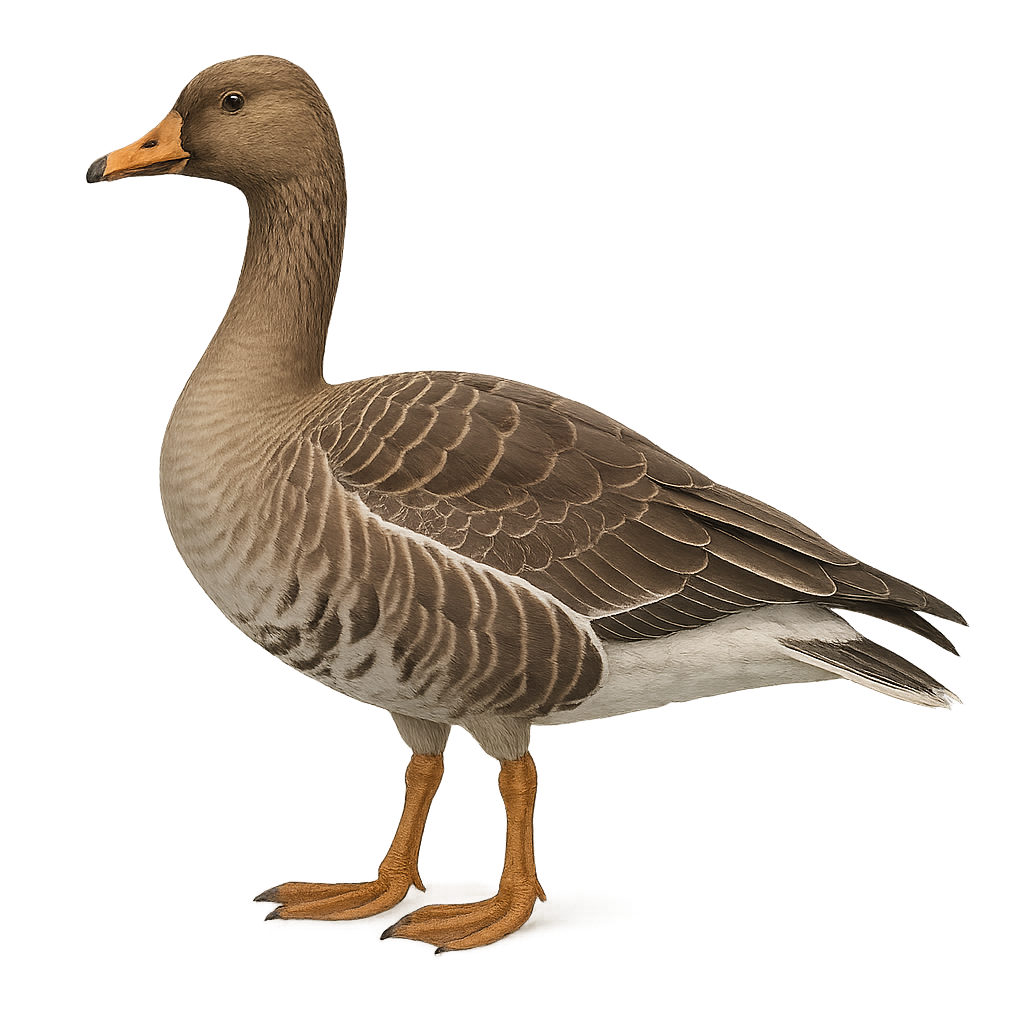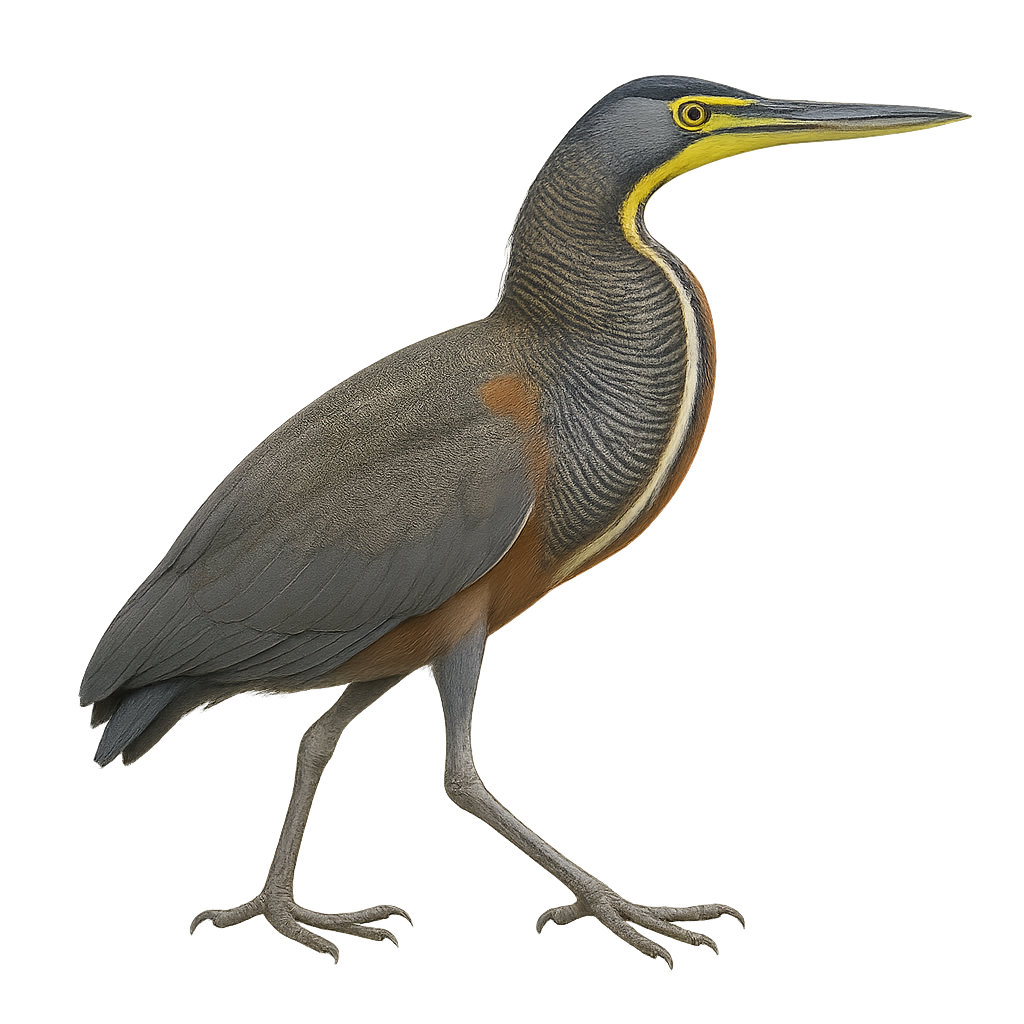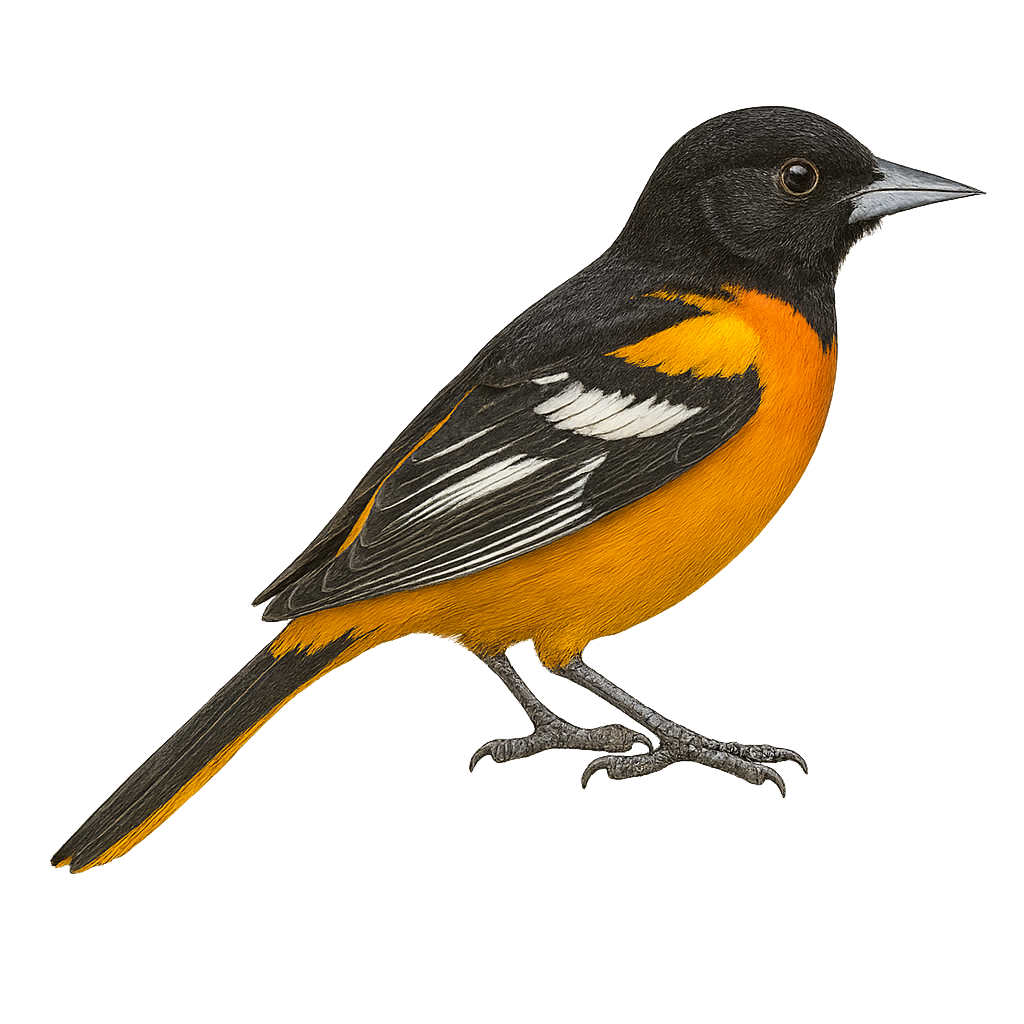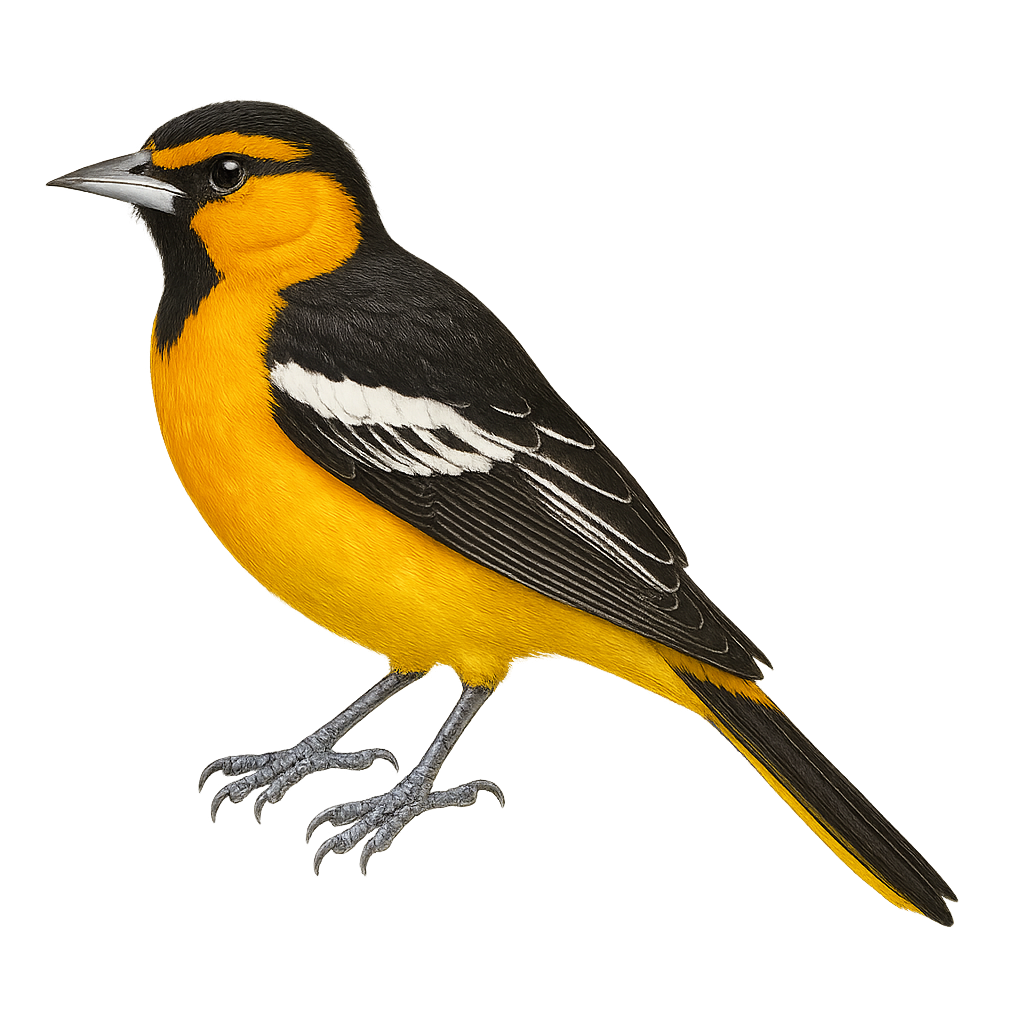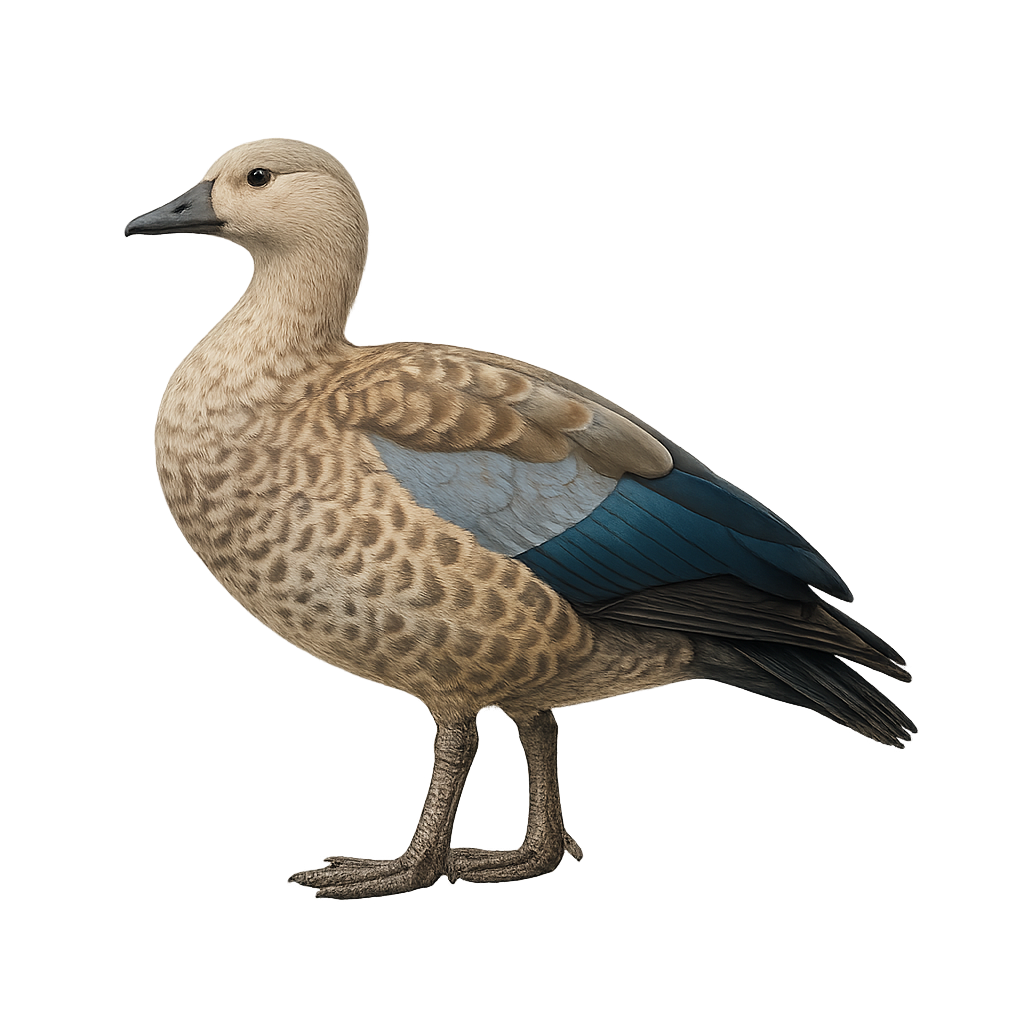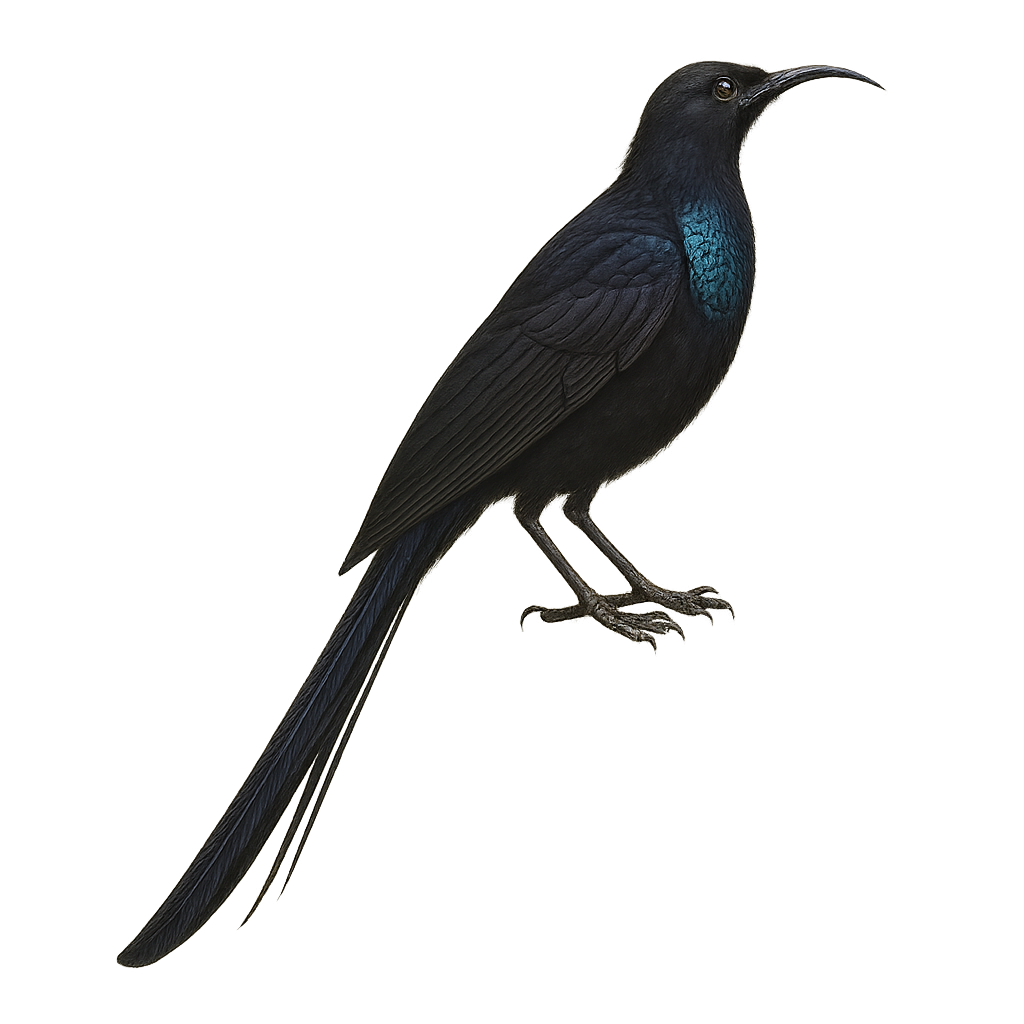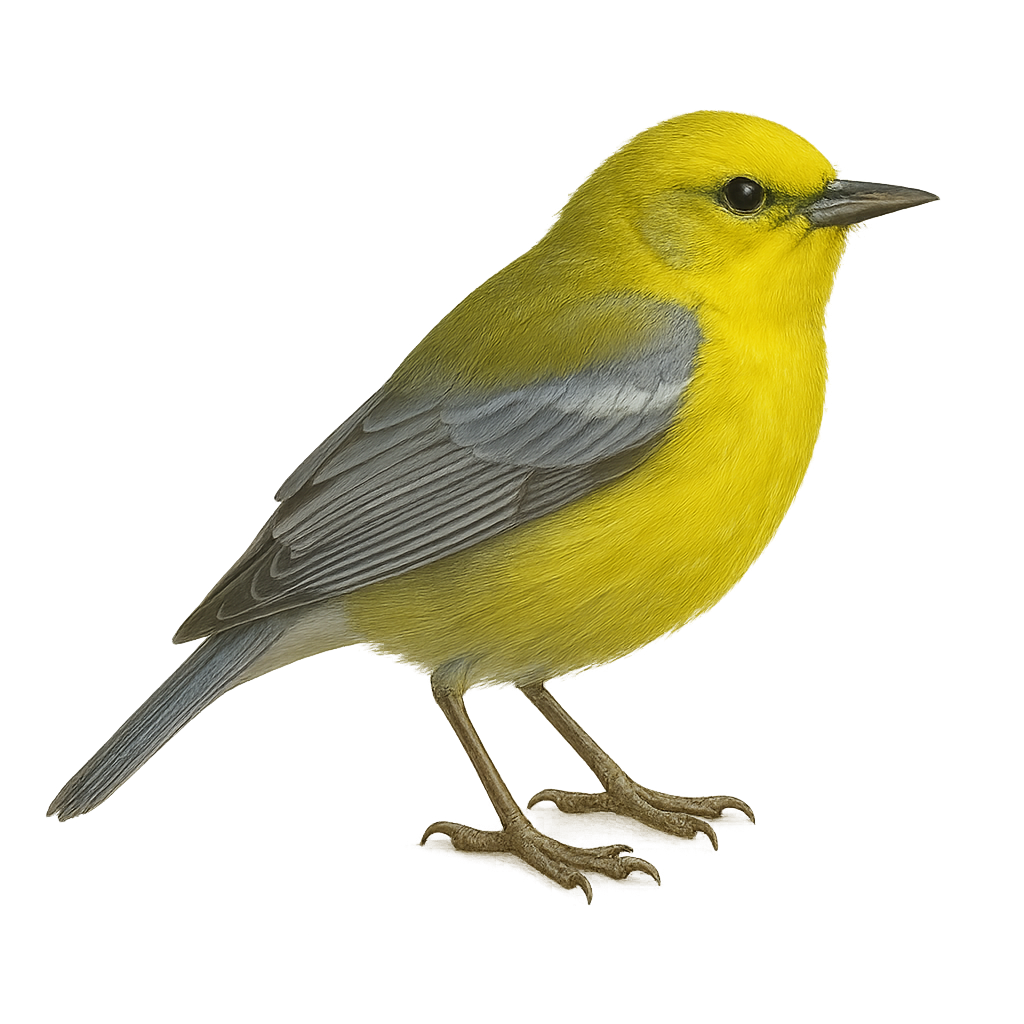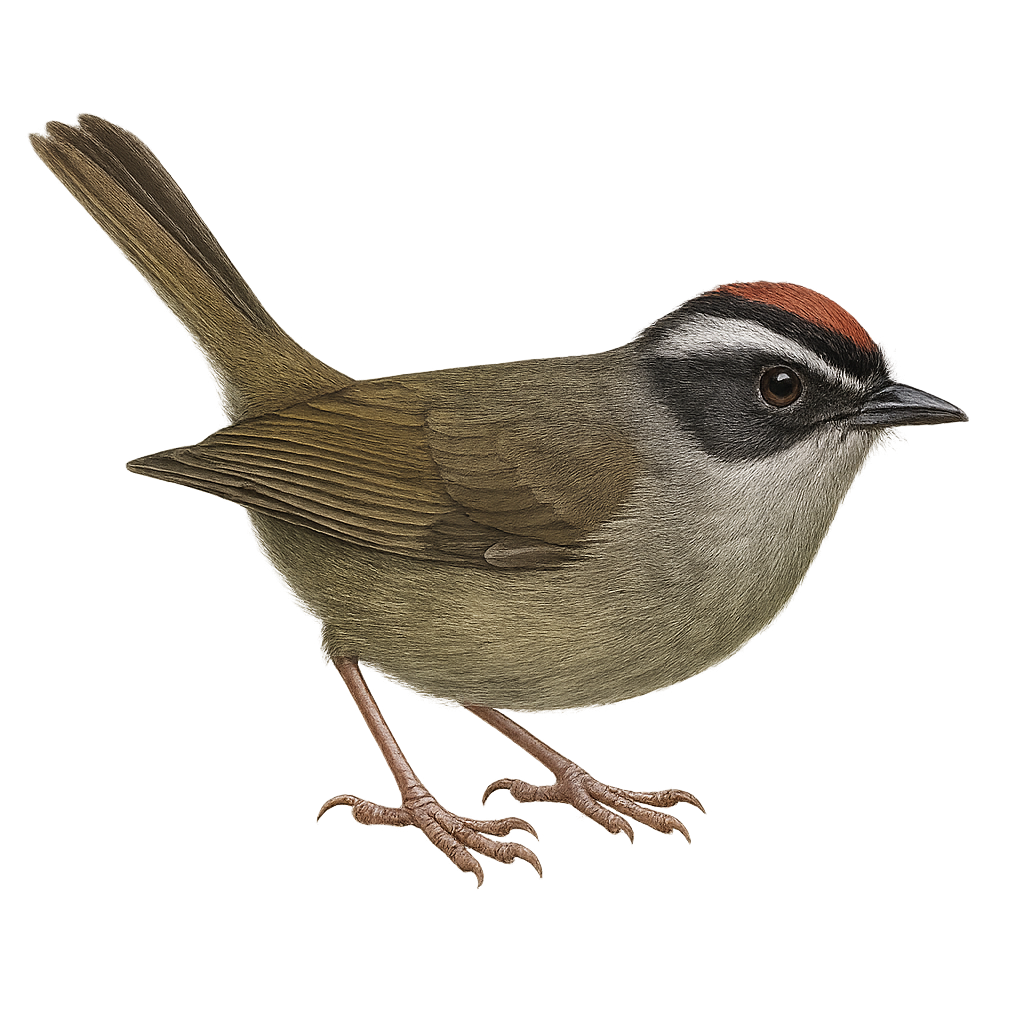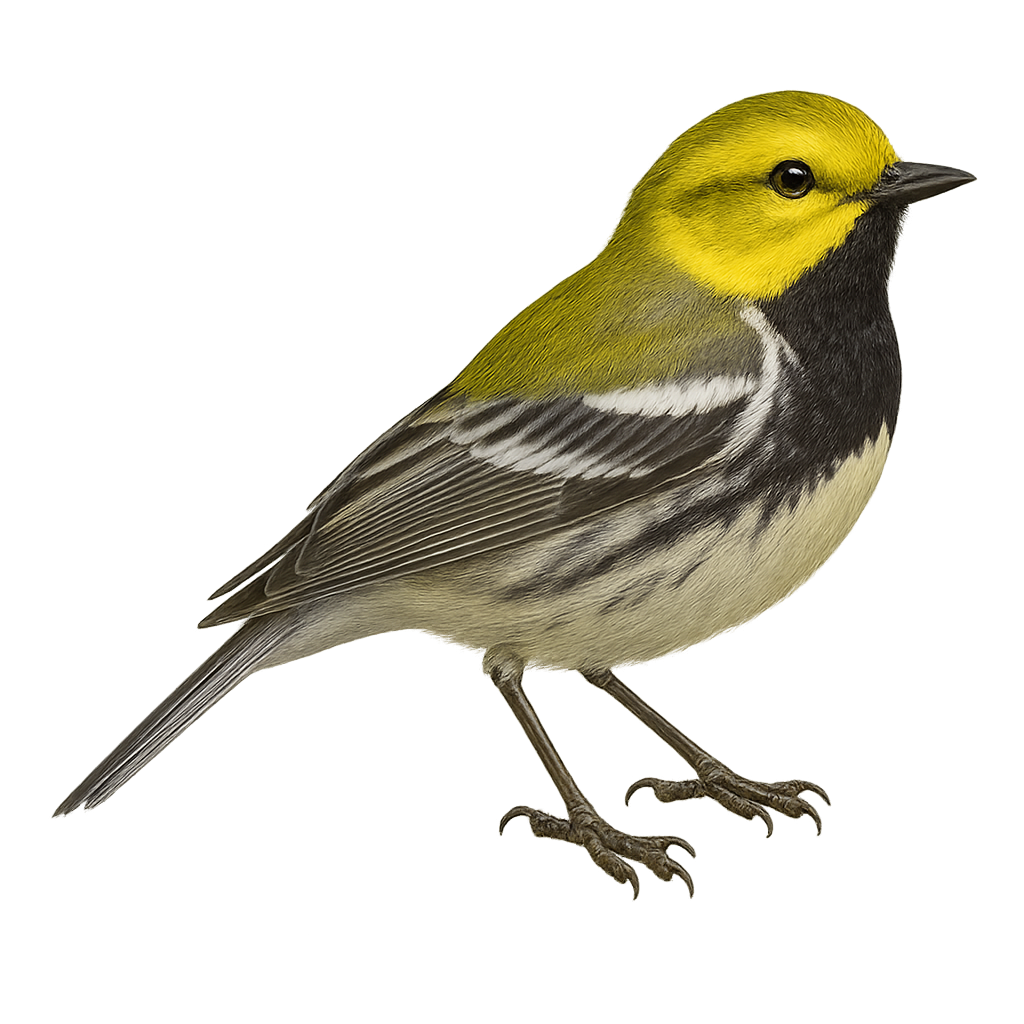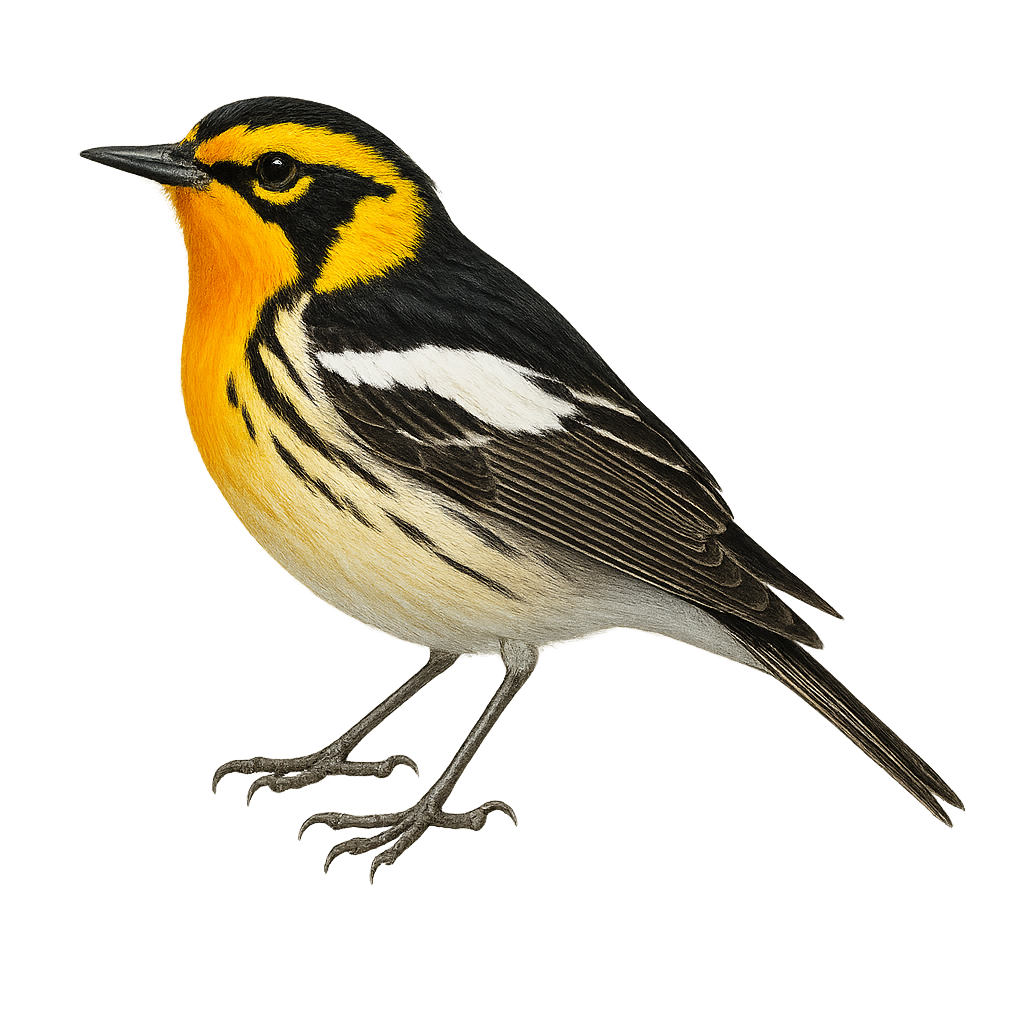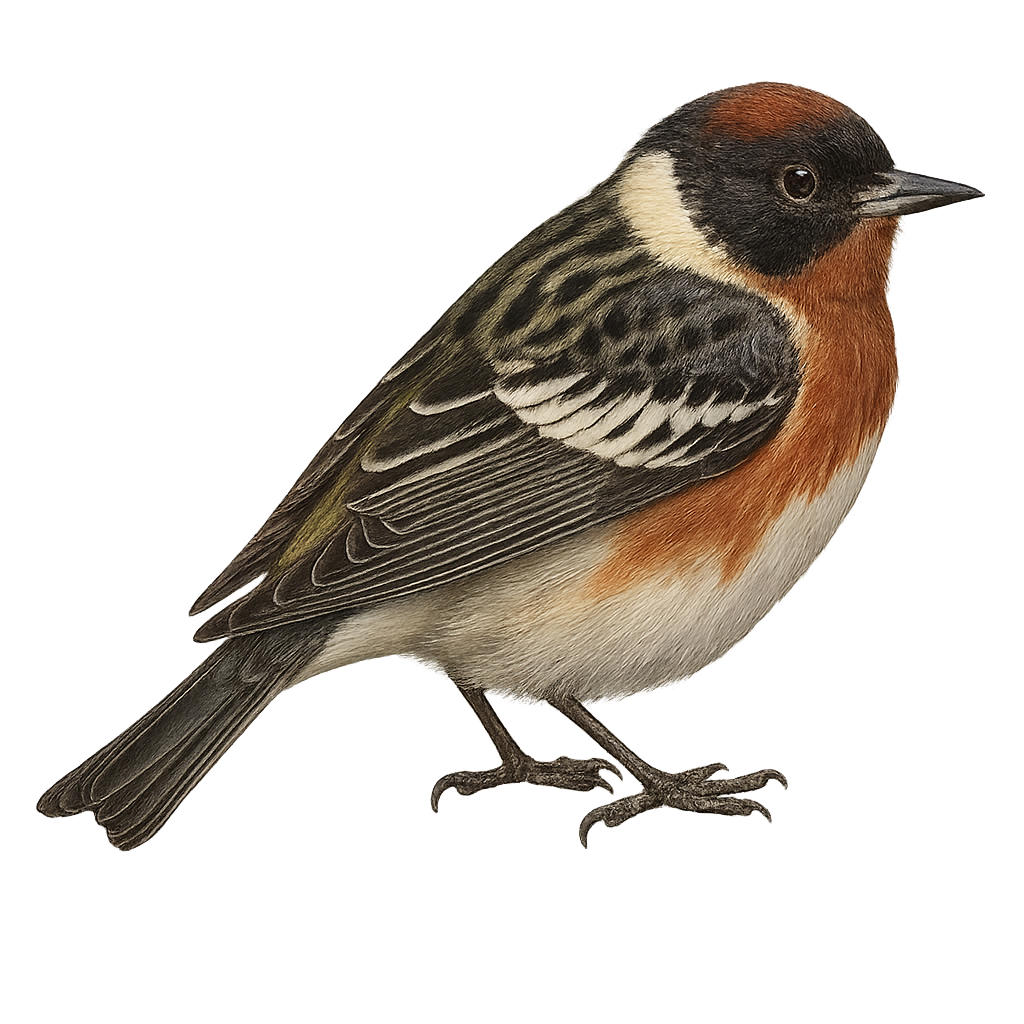The Chalcostigma herrani, or Bronze-tailed Thornbill, is a fascinating small hummingbird endemic to the Andes. It is distinguished by its iridescent plumage, with a bronze-colored tail that gives it a particular shine. This hummingbird measures about 10 cm in length and weighs between 4 and 5 grams. Its thin, slightly curved beak is perfectly adapted to collecting nectar, its main food source. It frequents high-altitude areas, often above 2500 meters, where it feeds on Andean flowers. Although not very shy, it remains vigilant against predators. Its ability to hover and make rapid movements makes it a captivating sight for nature observers.
The Buff-faced Pygmy Parrot, or Micropsitta pusio, is the smallest parrot in the world, measuring about 8 to 9 cm in length. It is primarily green with a distinctive yellow face and blue markings on the wings. This parrot inhabits the tropical rainforests of New Guinea and surrounding islands. It feeds mainly on lichens, mosses, and fungi found on tree trunks. Its behavior is discreet, making it difficult to observe in its natural habitat. It lives in small groups and uses tree cavities for nesting. Its small size and green plumage provide excellent camouflage in the dense canopy.
The Black-capped Pygmy-Tyrant, Myiornis atricapillus, is a tiny bird from the Tyrannidae family. It is one of the smallest birds in the world, measuring only about 6.5 cm in length. Its head is black, contrasting with a white belly and olive-gray back. It primarily inhabits the humid tropical forests of Central and South America, feeding on insects caught in flight. Its song is subtle, often hard to distinguish among the forest sounds. Despite its small size, it is an agile and fast predator. It is usually seen alone or in pairs, rarely in groups.
The Black Kite is a large bird of prey, measuring about 55 to 60 cm in length, with a wingspan of 150 to 160 cm and weighing between 800 g and 1.5 kg. It is distinguished by its predominantly black plumage with gray and brown shades, and a lighter head, often silvery-gray. This raptor has long, pointed wings, ideal for soaring and maneuvering in the air. The Black Kite is primarily found in Europe, but its range also extends to North Africa and the Middle East. It primarily inhabits open areas such as countryside, sparse forests, and riverbanks, where it feeds on small mammals, birds, reptiles, and also carrion. The Black Kite is an excellent glider, using thermal currents to stay aloft with minimal effort. This bird is also known for its social behavior and can be seen in groups, especially during migration. Although it is not in immediate danger, it faces threats such as habitat loss, poisoning, and collisions with power lines.
The Blue Rock Thrush, Monticola solitarius, is a medium-sized bird, measuring about 21 to 23 cm in length. It is easily recognizable by its bright blue plumage in males, while females display more brownish tones. This bird is often seen perched on rocks or cliffs, from where it surveys its territory. It primarily feeds on insects and small invertebrates but also enjoys berries. The Blue Rock Thrush is a partial migrant, found in southern Europe, North Africa, and parts of Asia. It prefers rocky and mountainous habitats, often near water. Its melodious and flute-like song is a delight for birdwatchers.
The Brown Thrasher, Toxostoma rufum, is a medium-sized bird known for its reddish-brown plumage and piercing yellow eyes. It is primarily found in North America, inhabiting open forests, thickets, and gardens. This bird is famous for its melodious and varied song, often mimicking other species. It feeds mainly on insects, fruits, and seeds. The Brown Thrasher is territorial, especially during the breeding season, vigorously defending its area. It builds its nest in bushes or low trees, using twigs and leaves. Although generally discreet, it can become aggressive if threatened.
The Broad-billed Motmot, scientifically known as Electron platyrhynchum, is a colorful bird found in the tropical forests of Central and South America. It is distinguished by its vibrant plumage, which includes shades of green, blue, and orange, and its broad, flattened bill. This bird measures about 28 to 30 cm in length. It is often seen perched quietly in the canopy, where it hunts insects and small reptiles. The Broad-billed Motmot is also known for its distinctive tail, which ends in two racket-shaped feathers. It uses this tail to communicate with its peers, especially during courtship displays.
The Blue-throated Toucanet, Aspatha gularis, is a fascinating bird from the Ramphastidae family. It is distinguished by its striking blue throat, contrasting with its bright green plumage. This toucanet primarily inhabits humid forests and wooded areas in Mexico and Central America. It is often observed in small groups, feeding on fruits, insects, and occasionally small vertebrates. Its beak, although less imposing than that of larger toucans, is robust and adapted to its varied diet. While relatively tolerant of human presence, it prefers remote and undisturbed areas. Its conservation status is currently stable, but deforestation could threaten its habitat in the future.
The Blue-capped Motmot is a fascinating bird, recognizable by its striking blue head and long racket-shaped tail. It primarily inhabits the tropical and subtropical forests of Central America, where it feeds on insects, small reptiles, and fruits. This motmot is often seen perched motionless, scanning its surroundings for prey. Its green and blue plumage allows it to blend into the dense vegetation, making it difficult to spot. Although generally solitary, it can sometimes be seen in small family groups. The Blue-capped Motmot is a territorial bird, using its melodious song to mark its territory.
The Black Phoebe, Sayornis nigricans, is a medium-sized bird belonging to the Tyrannidae family. It is characterized by its black and white plumage, with a black head, back, and tail contrasting with a white belly. This bird is often seen near streams, ponds, or wetlands, where it hunts flying insects. Its flight is marked by rapid wing beats and short glides. The Black Phoebe is a sedentary bird, primarily found in the southwestern United States, Mexico, and Central America. It is known for its melodious and repetitive song, often heard in spring and summer.
The Bonaparte's Gull, Chroicocephalus philadelphia, is a medium-sized bird, measuring about 28 to 38 cm in length with a wingspan of 76 to 84 cm. It is distinguished by its black head during the breeding season, slender black bill, and reddish legs. Outside the breeding season, its head turns white with a dark ear spot. It frequents lakes, rivers, and coasts, feeding mainly on small fish, insects, and crustaceans. A migratory bird, it breeds in the boreal regions of North America and winters along the Atlantic and Pacific coasts. Its flight is agile and swift, often compared to that of a tern.
The Brown-hooded Gull, or Chroicocephalus maculipennis, is a medium-sized bird known for its chocolate-brown head during the breeding season and its white and grey plumage. It primarily inhabits wetlands, lakes, and coastal areas in South America. Its diet is varied, including fish, insects, and small crustaceans. Often seen in groups, it gracefully flies over water or rests on shores. Although its conservation status is currently of least concern, it is sensitive to environmental changes, particularly pollution and habitat destruction.
The black-headed gull is a small gull easily recognized by its black head (in summer), white plumage, and light gray wings. It is primarily found in Europe and Asia and is often seen near bodies of water, in harbors, and estuaries. It is omnivorous, feeding on small fish, insects, and sometimes human scraps. This gull is also known for its aerial acrobatics, often seen flying and diving into the water to catch its food.
The Black-legged Kittiwake is a medium-sized gull, measuring about 40 to 45 cm in length, with a wingspan of 90 to 110 cm. It is easily recognizable by its white plumage with light gray wings and a black head during the breeding season. What particularly distinguishes this gull is the shape of its tail, which is deeply forked, hence its name "tridactyla." It primarily inhabits coastal regions of the North Atlantic, notably in rocky areas, cliffs, and subarctic islands. The Black-legged Kittiwake feeds mainly on fish, crustaceans, and marine insects. It is often seen flying over the water in search of food or resting on rocks. Although the population of this species is stable, it may be threatened by human disturbances, particularly the disruption of breeding colonies and marine pollution.
The Brown Noddy, Anous stolidus, is a medium-sized seabird belonging to the family Laridae. It is easily recognizable by its dark brown plumage and distinctive white cap. This bird is primarily found in tropical and subtropical regions, often nesting on isolated islands. It feeds mainly on fish and squid, which it catches by diving into the water. The Brown Noddy is an excellent flyer, using air currents to travel long distances over the ocean. Although generally not very shy, it can become suspicious during the breeding season.
The Buff-fronted Owl, or Aegolius harrisii, is a small nocturnal bird of prey belonging to the Strigidae family. It is recognized by its distinctive white eyebrows that contrast with its brown and buff plumage. Measuring about 20 to 25 cm in length, it has a wingspan of 50 to 60 cm. This owl primarily inhabits the humid forests and wooded areas of South America, particularly in Brazil, Argentina, and Paraguay. It mainly feeds on small mammals, insects, and occasionally small birds. Its call is a soft hoot, often heard during the night. Although discreet, it plays an important role in the ecosystem by controlling rodent populations.
The Bar-headed Goose, Anser indicus, is a remarkable bird species known for its ability to fly at high altitudes. It is easily recognizable by its white head adorned with two distinct black bars. These migratory birds travel long distances, crossing the Himalayas to reach their breeding grounds in Central Asia. They often gather in large flocks and are known for their V-formation flight. Their plumage is primarily gray with lighter shades on the belly. They mainly feed on aquatic plants, seeds, and small invertebrates. Their adaptation to various environments, from plains to mountains, demonstrates their resilience and adaptability.
The Bean Goose, Anser fabalis, is a medium-sized migratory bird belonging to the Anatidae family. It is recognizable by its brown-grey plumage, orange legs, and black bill with an orange band. Found mainly in wetlands, marshes, and open fields across Europe and Asia, it migrates south in winter, sometimes reaching North Africa. The Bean Goose is a gregarious species, often seen in large flocks. It primarily feeds on aquatic plants, seeds, and cereals. Although its conservation status is concerning, it remains widespread within its range.
The Bare-throated Tiger Heron, Tigrisoma mexicanum, is a medium-sized heron known for its distinctive plumage and elongated neck. It features gray plumage with black and white stripes on the neck and chest, and a bare yellow throat. Preferring wet habitats like mangroves, marshes, and slow rivers, it is found mainly in Central America. Often solitary, it stands still waiting for prey, primarily fish and amphibians. Though generally discreet, it can be seen at dawn or dusk. Its population is stable, but it is sensitive to habitat degradation.
The Blue-naped Chlorophonia, or Chlorophonia cyanea, is a small, colorful bird found in the tropical forests of South America. It is easily recognizable by its vibrant plumage, featuring a bright blue head, emerald green back, and striking yellow belly. Measuring about 13 cm in length, this bird primarily feeds on fruits and berries, playing a crucial role in seed dispersal. It typically lives in small groups and is often seen in the canopy of humid forests. Although its habitat is threatened by deforestation, it remains relatively common in some areas. Its song is soft and melodious, adding a musical touch to its natural surroundings.
The Baltimore Oriole, Icterus galbula, is a medium-sized songbird known for its striking plumage. The male boasts vibrant colors with a bright orange body and black wings, while the female is more subdued with shades of yellow and brown. This bird is often seen in open forests, parks, and gardens across North America, feeding mainly on insects, fruits, and nectar. Its melodious song is a distinctive feature of its presence. A migratory species, it winters in Central and South America. The Baltimore Oriole plays a crucial role in pollination and insect population control.
The Bullock's Oriole is a colorful songbird found primarily in the western United States. It is easily recognizable by its bright plumage: males display a striking mix of black, bright orange, and white, while females are more subdued with shades of yellow and gray. This bird prefers open habitats such as deciduous forests, orchards, and riparian areas. It feeds mainly on insects, fruits, and nectar. During the breeding season, the Bullock's Oriole builds hanging nests in trees, often at the tips of branches. Although its song is melodious, it is often difficult to spot due to its wary behavior.
The Blue-winged Goose, Cyanochen cyanoptera, is a bird species endemic to the Ethiopian highlands. It is characterized by its grey-brown plumage with bluish tints on the wings, giving it its name. This medium-sized bird, measuring about 70 to 80 cm in length, is often found near lakes and marshes. Its bill is black, and its legs are dark grey. The species is primarily herbivorous, feeding on grasses and aquatic plants. Although relatively discreet, it can be seen in small family groups. Habitat conservation is crucial, as it is classified as vulnerable due to the degradation of its natural environment.
The Bearded Tit is a small passerine bird primarily found in marshy areas and reed beds of Europe and Asia. It measures about 15 to 20 cm in length and weighs between 15 and 20 g. What particularly distinguishes the Bearded Tit is its plumage in shades of brown and cream, with long black moustaches that give it its name. It is often observed in reed beds and wetlands, where it primarily feeds on seeds, insects, and arthropods. Although it is an excellent climber and stealthy thief, the Bearded Tit is unfortunately threatened by the destruction of its natural habitat and the reduction of reedbed areas. This species is currently listed as "near threatened" by the IUCN.
The Black Sicklebill, or Epimachus fastuosus, is a bird of the Paradisaeidae family, renowned for its spectacular plumage and elaborate courtship displays. Native to New Guinea, it primarily inhabits montane tropical rainforests. Males are distinguished by their glossy black plumage with metallic sheens and long sickle-shaped tails. They perform complex dances to attract females, who are duller and brown. These birds primarily feed on fruits and insects. Their habitat is threatened by deforestation, leading to a decline in their population. They are currently classified as vulnerable by the IUCN.
The Blue-winged Warbler, Vermivora cyanoptera, is a small songbird belonging to the Parulidae family. It is easily identified by its bright yellow plumage and distinctive blue wings. This passerine measures about 11 to 13 cm in length with a wingspan of 17 to 20 cm. The male features a bright yellow crown and a black eye stripe, while the female displays duller colors. It inhabits open forests, thickets, and regenerating forest areas. Its song is a distinctive buzzing sound that echoes through its habitat. The Blue-winged Warbler is migratory, wintering in Central America and spending summers in the eastern United States.
The Black-cheeked Warbler is a small songbird from the Parulidae family, primarily found in the humid montane forests of Central America, especially in Costa Rica and Panama. Its plumage is marked by a distinctive black cap, contrasting with white cheeks and an olive back. It measures about 12 cm in length and weighs between 9 and 12 grams. This bird is often seen in pairs or small groups, feeding on insects and spiders found in dense foliage. Although its habitat is relatively limited, it is not considered threatened due to the preservation of its forested areas.
The Black-throated Green Warbler is a small songbird belonging to the Parulidae family. It is easily recognizable by its black throat contrasting with its white belly and olive-green back. Males display brighter colors than females, especially during the breeding season. It primarily inhabits coniferous and mixed forests in northeastern North America. As a migratory bird, it winters in the tropical regions of Central America. Its song is distinctive, often described as a "zoo-zee-zoo-zoo-zee". Although its habitat is threatened by deforestation, it is still widespread and considered of least concern by the IUCN.
The Blackburnian Warbler, Setophaga fusca, is a small songbird belonging to the Parulidae family. It is easily identifiable by its bright orange throat, contrasting with its black and white plumage. Males display more vibrant colors than females, especially during the breeding season. This migratory bird primarily nests in the coniferous forests of northeastern North America and migrates to Central and South America for the winter. The Blackburnian Warbler feeds mainly on insects, which it catches in the foliage of trees. It is often seen actively moving through branches in search of food.
The Bay-breasted Warbler is a small songbird belonging to the Parulidae family. It is easily recognizable by its chestnut-colored breast, contrasting with its white belly and black and white wings. Males display brighter colors than females, especially during the breeding season. This migratory bird primarily nests in the coniferous forests of Canada and the northern United States, migrating to Central America and northern South America for the winter. Its diet mainly consists of insects, but it can also feed on berries in the fall. The Bay-breasted Warbler is an active and agile bird, often seen foraging in tree branches.


